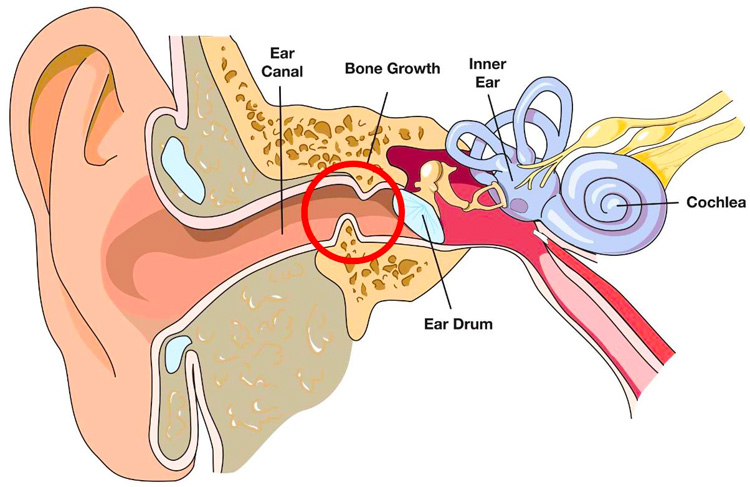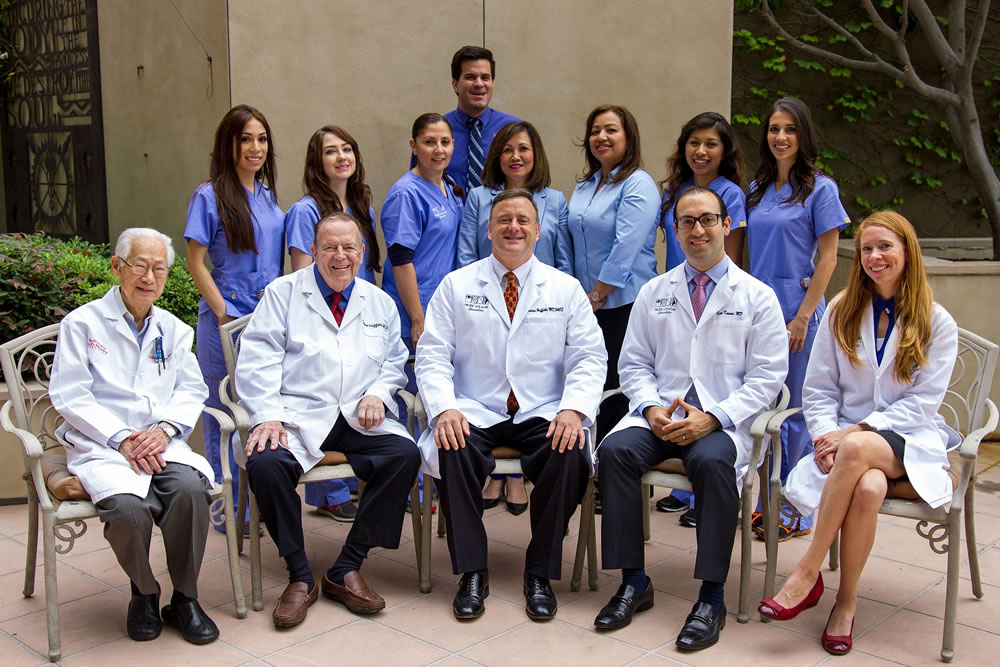
Surfer’s Ear (Exostosis)
Exostosis, sometimes referred to as surfer’s ear, occurs when there is abnormal bone growth within the ear canal. This thickening and constriction of the ear canal can lead to conduction hearing loss. Ear wax and other debris can become trapped in the canal, which can cause frequent ear infections. The most common cause of exostosis is cold water and windy conditions, which makes exostosis especially prevalent among surfers, outdoor swimmers, and divers.
Most patients develop the surfer’s ear in their mid-30s. Exostoses present as small bony lumps within the external ear canal. These lumps are very slow growing and typically take years to develop. They develop as thin layers of bone growth due to the stimulation of cold water or air. Exostoses frequently occur in both ears; however, they can grow at different rates. These growths do not resolve on their own; however, it often takes years before they are large enough to cause symptoms and require treatment.
Symptoms of Surfer’s Ear
The normal ear canal is roughly the diameter of a pencil. Symptoms develop when the exostoses grow to the point that the diameter of the canal is substantially reduced. Early symptoms of exostosis typically include water becoming trapped in the ear when swimming, an increase in ear infections, and a gradual decrease in hearing sensitivity.
Preventing Surfer’s Ear
The availability of better wet and dry suit protection allows individuals to swim and dive in much colder waters. This has led to an increase in the frequency and severity of surfer’s ear. In fact, cold water surfers develop exostoses at a 600 percent higher rate than those who surf or swim in warm water. If you participate in these activities, you can reduce your risk of developing exostoses by taking the following precautions:
- Use custom ear plugs and wear a swim cap or hood
- Avoid swimming, diving, or surfing in very cold and windy conditions
Treatment for Surfer’s Ear
Individuals with small, asymptomatic exostoses typically do not require treatment. Individuals experiencing hearing loss, repeated infections, or pain should consult our ENT specialists regarding surgical removal.
Recovery following surgery is usually very quick and typically does not involve time off of work if the surgery is done through the ear canal. Any discomfort can normally be controlled with mild pain medication or ear drops. The doctor may also prescribe antibiotic ear drops to prevent infection and to keep the medicated pack moist. Following surgery, the patient should avoid exposing the ear to cold water for two to six weeks to prevent infection and complications.
Most patients experience favorable outcomes following surgery for exostoses. Continued exposure to cold water will stimulate the regrowth of the exostoses, which could require revision surgery, so patients should use ear plugs after surgery.
For more information, please call our office for a consultation with one of our ENT surgeons – (310) 477-5558, or complete the form below.

Make an Appointment
Send us a message by filling out your details in the form below.

